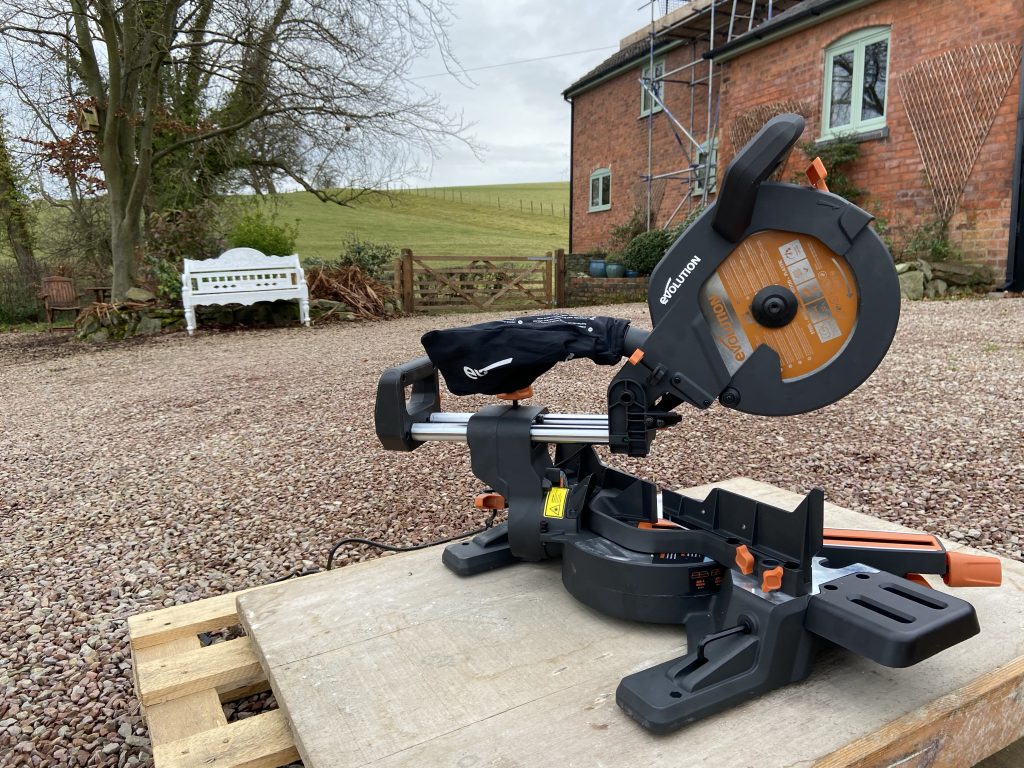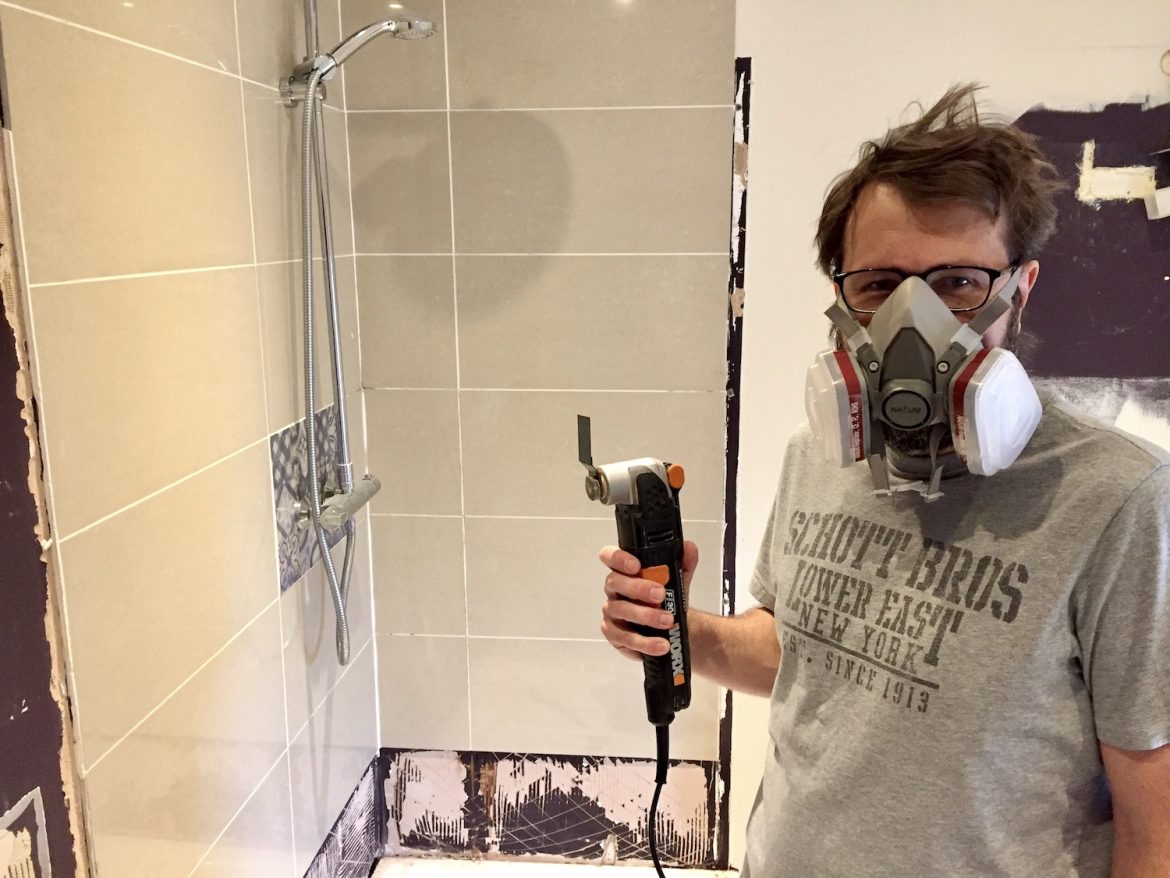The home can potentially be a highly dangerous place when you’re carry out work or upgrades, so every DIYer needs to take precautions and apply common sense. As we’ve done a lot DIY work around our property (and watched professional tradesmen) we’ve identified some important DIY do’s and don’ts.
DIY Do’s
- It doesn’t matter what kind of work you’re doing, always be careful and use good judgement, especially when using tools.
- Always be in control of what you’re doing. As soon as you lose control, you could be putting yourself and others at risk.
- Measure and remeasure wood, metal or any other material before cutting. If you cut it too short, you can’t undo it. So be cautious and take your time.
- Don’t always buy the cheapest materials. Recognise that you get what you pay for. If you want something to last, invest in it. Since you’re doing it yourself, you’re saving money on labour.
- By extension, don’t always buy the most expensive materials and products either. The most expensive is not always the best. Do your research. Check out reviews. Speak to people. Then make an informed decision.
- Instructions on product labels and cans are important. They tell you how to use and handle products safely. Most silicones, cleaners, paints and solvents are toxic and full of nasty chemicals. Always read the usage and safety guide when using a new product.
- Tools can be extremely dangerous and do a lot of harm if not used correctly. I always read the instructions and manual for new tools, especially power tools with blades (mitre saws, multitools, jigsaws, etc.). You don’t want to be impaled by a blade you’ve not mounted or secured correctly.
- Be organised when starting a new project. Have all the tools and equipment you need to complete the task around you and at hand.
- Understand how a tool works and do a few test runs to familiarise yourself with it. The more you understand how something works (and its limits) the less likely you are to hurt yourself or break it.
- On the subject of tool limitations, don’t use them for purposes they’re not intended for. If it’s not designed to do something, don’t force the issue.
- Use the right tool for the right job. Invest in a mitre saw or impact driver. These tools revolutionised our DIY.

- Keep your body and hands away from blades and cutters on power tools. Be patient and take your time, and “see” your cutting lines and ensure your hands and fingers or not on course to get trimmed with the material you’re cutting.
- Make sure your electricity supply is not overloaded and that you don’t have any exposed wires or cables. You don’t want to trip the electricity midway mitresawing through a board and that blade becoming stuck and potentially hurting you.
- Check for possible cables or pipes before drilling or cutting into walls, ceilings or floors. This is difficult and I recently cut through a light cable when using the multitool to get through a chipboard floor I was removing. Once you can see a little bit behind the surface you’re cutting, try and determine if there are wires and pipes.
- Always clamp small pieces of wood or metal to a workbench or work surface when using a power tool to cut or drill.
- Remember that things can go wrong very quickly and our human reaction times will not always be quick enough. Always stay vigilant.
- If a tool has been designed for two-handed operation, try and adhere to that. For example, do not try and chainsaw one-handed.
- I feel that lighting is essential. Make sure that the space you’re working in is well lit. That way you can see what you’re doing and you’ll limit any chances of making a mistake. If lighting is poor, make sure who have a good torch.

- When working with water and pipes, do yourself a favour and turn off the stopcock before commencing with the work. That way, if anything goes wrong you won’t have to worry about water flooding your property. Also know where the mains water cutoff is for your property if the stopcock fails.
- As with the stopcock, if working with electrics go to the consumer box and turn off the relevant circuit breakers.
- Respect electricity, especially when working on 220-240 volts. This is very dangerous, and as the saying goes, “You don’t get many/any second chances”.
- I have a terrible fear of heights and I always check ladders before using them. You should ensure that the rungs and sides are not damaged. If in doubt, don’t use the ladder.
- Check that a ladder is secure before you climb it. Also, make sure that the ladder is propped up and won’t slip if you’re by yourself. If working with someone, ask them to keep their foot at the base of the ladder so that it doesn’t slip.
- If you get stuck on a DIY project, Google or YouTube will more than likely have the answer. Spend time researching solutions for good outcomes.
- Use protective gear and clothing. When using a multitool or saw (check out this video) on materials that cause a lot of dust (like plasterboard) I use a face mask and googles. That dust is not good for you to breath in, and it’s not pleasant when it gets in your eyes.
- I wear gloves for almost all tasks now. They keep your fingers warm in winter, providing you with better range of movement. They also protect your hands from nasty scrapes and cuts, especially on woodworking projects.

- If you have a partner, ask them to help out in areas that you’re not good at. It’ll save you money and when the project is done, there will be a sense of mutual achievement.
- Closing tip – just stay alert and aware of potential damage you can do to yourself.
DIY Don’ts
- Don’t presume anything. Double check everything before you start on your project.
- Avoid wearing loose, baggy clothing, scarves or dangling jewellery when using power tools.
- Do not hide garbage and packaging behind cabinets and walls. The previous owners used to dump all their packaging behind walls, covers, cabinets and bath tubs. It’s a real pain to have to clean garbage bags full of rubbish before embarking on any work.

- Don’t use tools (especially power tools) for purposes that they weren’t designed for.
- If you’ve drunk alcohol or taken drugs, don’t work with power tools. That’s a recipe for disaster. Drugs and alcohol impair judgement and put you in harm’s way. Most of you will be shaking your head in disbelief at this stupidly obvious tip. Not that stupid I assure you. We met a carpenter that lost two fingers on a circle saw because he’d had a couple too many beers.
- If a power tool is damaged, making a weird sound or emitting an irregular smell, stop using it immediately and figure out what’s wrong with it.
- Never cut small, loose pieces of wood or metal using a power tool. Small off-cuts that you cannot hold securely, or that you cannot clamp can fly off and damage you or others around you. Rather opt for a manual tool, where you have full control.
- Don’t use power tools if you’re in an uncomfortable or contorted body position. For example, if you’re on a ladder or in a tight space, you might lose your balance while trying to operate the tool and could harm yourself. Never put yourself in a situation where you’re not in full control of what you’re doing.
- This is a motto I abide by in the kitchen and have now extended to DIY. Never work with blunt saws, blades, cutters or drills. If a tool isn’t sharp, it’s not going to work as intended and you’re more likely to ‘force’ an outcome by pushing harder or getting frustrated. Your actions could damage you and the tool.
- Do not use power tools or other electric appliances in the rain.
- If you have battery operated power tools do not leave your batteries outside in the cold as it’ll damage them. Keep batteries in warm, dry places.
- Do not saw a long length of wood (by hand or mitre saw) if it’s not well supported at both ends.
- Never try and saw in midair or by supporting the piece you’re working on with a part of your own body.
- Never carry sharp tools in your pocket. I’ve also scratched myself on more than one occasion by leaving long wood screws in my pocket.
- Don’t overreach or overstretch when working on a ladder. Always maintain your balance and be in a position to maintain your own body weight.
If you’ve got any good DIY do’s and dont’s we haven’t covered please leave a comment. We’d love to hear from you.
*DIY Do’s and Don’ts versus Dos and Don’ts – nothing to do with DIY
I’m a stickler for grammar, and the do’s and don’ts usage has irked me on more than one occasion. Generally, the apostrophe is misunderstood, misused and abused.
Apostrophes, in most cases, are not used to make words or abbreviations plural: it’s CDs, 1920s, T&Cs. That aside, it’s permissible to use the apostrophe to eliminate confusion. So, for example, you would write “dot your i’s and cross your t’s” because without the apostrophe that could be confusing to understand.
Do’s and don’ts is a tricky one though. The omission apostrophe in don’ts (do nots) triggers people to add the apostrophe in do’s. This apostrophe in do’s signals a plural so in order to be consistent don’ts should also be made plural: don’t’s. But that looks awful, and a bit unEnglish. But it’s correct.
So in such instances we go to recognised style guides, which didn’t really help because no one agrees. The Associated Press and authors of Eats, Shoots and Leaves recommend do’s and don’t’s.
I’ve been a writer and editor and here’s my verdict. We should write it Do’s and Don’ts. Why? Well, dos is asking to be mispronounced – is it Bill Gate’s first operating system (disk operating system)? Is it Spanish? The apostrophe removes the confusion.
As for don’ts, I can’t bring myself to write don’t’s. It looks downright crazy.
So it’s do’s and don’ts. It’s not the perfect or correct solution, but I’m going to live with it and most importantly be consistent.
